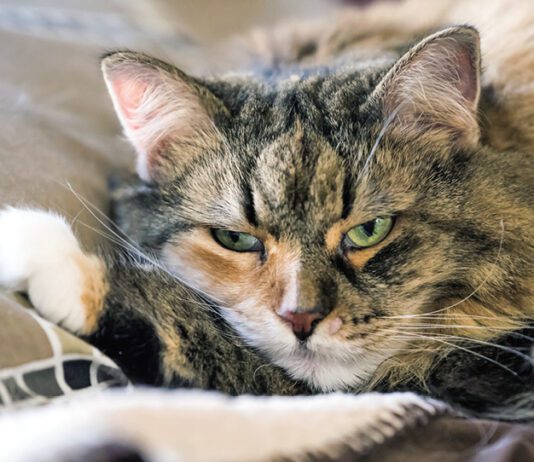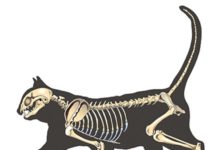Fungus in Brazil
The American Veterinary Medical Association (AVMA) reports that the Centers for Disease Control (CDC) is monitoring a fungal infection (Sporothrix brasiliensis) in Brazil and nearby countries that is being spread by cats to people. The infections in cats are known as clown nose because of the swollen, infected nasal mucosa seen in affected cats. Its usually fatal in cats.
Tiny Antiviral Molecule Offers Hope
Feline infectious peritonitis (FIP) is a devastating disease of cats for which there are currently no effective therapies available. Occurring in two forms-a wet form in which fluid accumulates in body cavities and a dry form in which affected cats develop neurological signs-the current prognosis for cats with FIP is grave. FIP develops in approximately 5 percent of cats infected with the ubiquitous (and usually well-tolerated) feline enteric coronavirus.
Choosing a Board-Certified Veterinarian
If your cat has been diagnosed with a complex or serious illness or needs specialty surgery, your regular veterinarian may recommend a referral to a board-certified specialist, a veterinarian who has put in extra training in a certain field, much like a human oncologist or cardiologist.
Cats Are Larger
Modern domestic cats are at least 16 percent bigger than their Viking-Age ancestors (793-1066 AD), according to a Danish study shared by The Winn Foundation. Researchers excavated the remains of adult domestic cats at archaeological sites in Denmark as well as modern skeletal remains.
Your Guide to Pain in Cats
Cats hide injuries and pain by instinct, a behavior that is important for survival in the wild. This forces us to be detectives when our cats are ill.
How Your Kitty Uses Radar
Your cat has several rows of whiskers, usually 12 arranged in rows, and a few over her eyes. You may also see them along her jawline, near her ears, and on the back of her front legs. All these whiskers, or vibrissae, are stiff tactile hairs that help your cat learn about her environment.
Poor Prognosis: Restrictive Cardiomyopathy
A recent study out of Italy looked at survival and prognostic factors for cats with restrictive cardiomyopathy. The researchers looked at 90 cats who had been diagnosed with this cardiac condition via echocardiography between 1997 and 2015. There were 53 more males than females in the study.
Accidents and Injuries Happen
We round up our series on when to use an emergency clinic with a look at common feline injuries. Believe it or not, cats have their own set of accidents to which they are prone. In this article, we discuss some of the more common problems seen in veterinary emergency clinics. Obviously, not every possible emergency scenario is listed here, so if youre not sure, always err on the side of caution and take your cat to the ER if your cat has been injured.
A Crystal Ball in Your Cats Urine
Finding crystals in a urine sample can be a warning that painful urinary stones and/or deadly blockages may be forming. Persian and Himalayan cats have an increased risk for urinary crystals and stone formation.
Happening Now…
Angelos Pizza in Matawan, N.J., is delivering more than just food, according to CBS NewYork Channel 2.
New Hope for FIP
I recently lost a cat to feline infectious peritonitis (FIP), and this was a dreadful experience. No matter what we did, he continued to accumulate fluid in his chest and abdomen, and my veterinarian told me that there is no cure for this condition. All we could do was repeatedly remove the fluid until his quality of life became so poor that we decided to have him euthanized. Are you aware of any research that is being done that may improve this situation for other cats afflicted with FIP?
Mirtazapine for Liver Disease
Mirtazapine, a tricyclic depressant for humans, has been shown to have appetite stimulant benefits for cats. Since cats who have a decreased appetite can develop life-threatening conditions such as hepatic lipidosis, this medication can have important uses in cats.
















